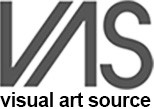An exhibition of work by Anne Truitt will open at Charlotte Jackson Fine Art with a reception on Friday, June 27 from 5 to 7 p.m. and extend to July 27. The gallery is located at 554 S. Guadalupe in Santa Fe’s Railyard Art District.
Sunlight shining through a new green leaf. The secret pink interior of an empty shell. The temperamental maroon of a flower petal. Each painting evokes a visceral response, a complex mingling of body and emotion. For the viewer these paintings on canvas and paper quietly open up unexpected corridors of memory and thought. In Truitt’s work, color means something – from a burst of orange to a geometric assemblage of blue. As Truitt has said: “Once it had occurred to me that I could use color metaphorically for content, I realized that I could go ahead with new freedom.”[i]
Paintings and Works on Paper offers viewers an opportunity to explore pieces that are rarely exhibited, including an untitled celadon green acrylic painting on paper from 1964 that was included in a retrospective at the Corcoran in 1974. Although Truitt is known primarily for her columnar wooden sculptures, she also painted on canvas and paper. This exhibition offers the opportunity to see a selection of pieces in these media, completed between the 1960s (when Truitt began to develop her signature sculptures) and 1980s.
Anne Truitt came to art relatively late in life. Born in 1921 in Baltimore, Maryland, Truitt studied psychology at Bryn Mawr College and began her working life at a hospital in Boston, treating shell-shocked soldiers in 1943. It wasn’t until 1948 that Truitt enrolled in Washington, D.C.’s Institute of Contemporary Art. Her early sculpture, figurative and stylized, was primarily in clay, plaster, and colored cast concrete. During the 1950s, Truitt and her family moved often, and Truitt continued to study art with different teachers around the country, including Octavio Medillin, and Peter Lipman-Wulf.
It was a visit to the Guggenheim Museum in New York in 1961 that caused a great shift for Truitt. She cites three pieces in particular that triggered a radical change in the direction of her work: a wood construction by Nassos Daphnis, a black painting by Ad Reinhart, and a large color field painting by Barnett Newman. As she says in her biographical book, Prospect, “Combined, these three works exploded to reverse my whole way of thinking about how to make art.”[ii] She goes on, “At one stroke, the yearning to express myself transformed into a yearning to express what this landscape [her childhood landscape of Easton, Maryland] meant to me, not for my own emotional release but for the release of a radiance illuminating it behind and beyond appearance.”[iii] The first expression of this radical “reversal” was a work called First, which at first glance seems to be a simple white picket fence. On closer inspection it is incongruous, distorted. From this piece evolved the square columns for which Truitt became famous. Color – applied in a laborious process of putting on a layer of paint, sanding it down, applying another and another, creating soft luminous surfaces – was the last piece of the puzzle. Truitt said that her sculptures were, “essentially paintings in three dimensions.”[iv]
From Truitt’s first solo exhibition at the Andre Emmerich Gallery in New York City in 1963, she attained widespread acclaim. Her work has been included in exhibitions and permanent collections in prominent museums and galleries around the world, including the National Gallery of Art, the Metropolitan Museum of Art, the Whitney, the Corcoran, and the Hirshhorn. She was one of only three women included in the influential 1966 exhibition Primary Structures at the Jewish Museum in New York. The prominent Albright Knox Museum recently received a significant donation of works for its permanent collection by Anne Truitt as a bequest from world-renowned Panza Collection.
In Paintings and Works on Paper, the variety of color and form offers the viewer a range of experiences. For example, the large 1988 canvas, Heading South, shows an asymmetrical many-sided white form inside a pale blue field of color, balanced precariously on a strange purple line. An untitled 1966 work on paper consists of three horizontal bands of color of different sizes: pale yellow ascends to cornflower blue that gives way to a large block of brilliant orange. A 1971 work on paper gives a field of deep maroon that seems to be splitting down the center, undermined by vertical red lines. In each of these works the radiance of which Truitt spoke comes through.
Standing before each painting the viewer engages in a complex unfolding of many layers of sensory experience, memory, and emotion. As art historian James Meyer puts it, her works “are not depictions of images or events, but metonyms pointing to a complex of associations.”[v] In the luminous color of the paintings in Anne Truitt: Paintings and Works on Paper, the viewer finds nuance, light, and visual poetry.
For more information about this exhibition please contact 505-989-8688 or press@charlottejackson.com or visit our website: www.charlottejackson.com.
[i] Meyer, James. “Grand allusion: James Meyer talks with Anne Truitt – Interview” ArtForum, 2002.
[ii] Truitt, Anne. Prospect, Scribner, NY, 1996, quoted in: Diehl, Carol, “Anne Truitt The Columnist,” in Art in America, March 2010.
[iii] Ibid.
[iv] Ibid.
[v] Meyer, James. Minimalism: Art and Polemics in the Sixties. Yale University Press, 2004. Pg 72.



